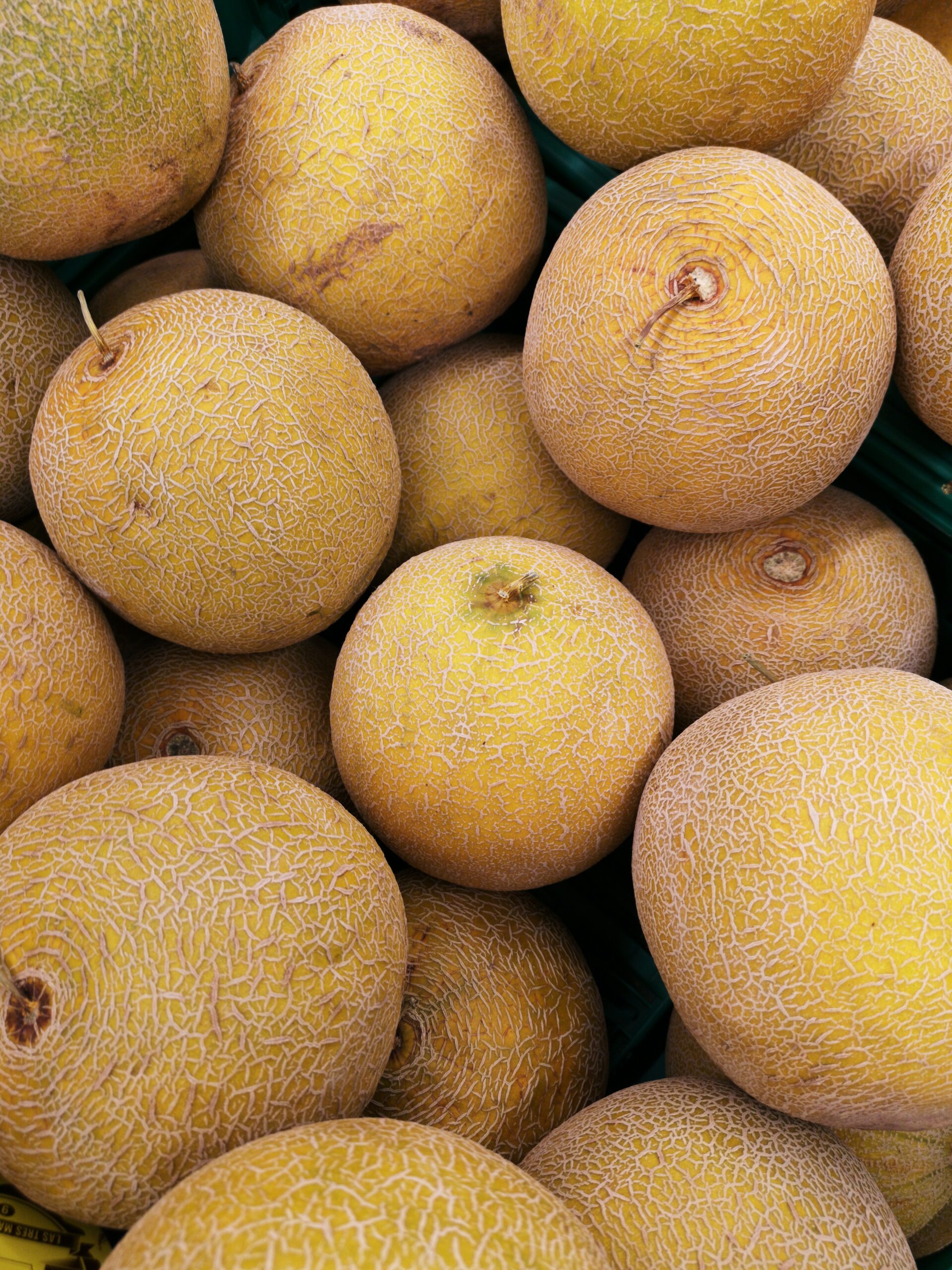
Today, we’re tackling a juicy topic: cantaloupe. This succulent fruit is a staple for its refreshing sweetness, but sometimes, we find ourselves with more cantaloupe than we can consume before it spoils. So, the burning question emerges: Can you freeze cantaloupe? I’m here to tell you, yes, indeed, you can! Freezing cantaloupe is a fantastic way to preserve its freshness and ensure you have this delicious treat on hand whenever you desire.
I’m Christopher, I’m a food expert with a focus on easy, everyday recipes and nifty kitchen guides. I’ve learnt so much from spending so much time in the kitchen, and my mission is to enrich your life with simple answers to common food questions.
This post is your go-to guide for freezing cantaloupe at home, answering all your pressing queries about turning this summer delight into a year-round pleasure. Join me as I share how I’ve used this method for freezing leftover cantaloupe time after time with perfect results!
Why Freeze Cantaloupe?
There are several reasons why you might want to freeze cantaloupe. Maybe you bought too much and don’t want it to go to waste, or you want to have some on hand for smoothies or fruit salad. My favourite reason to freeze cantaloupe is to extend its shelf life, so I can enjoy this fruit even when it’s not in season.
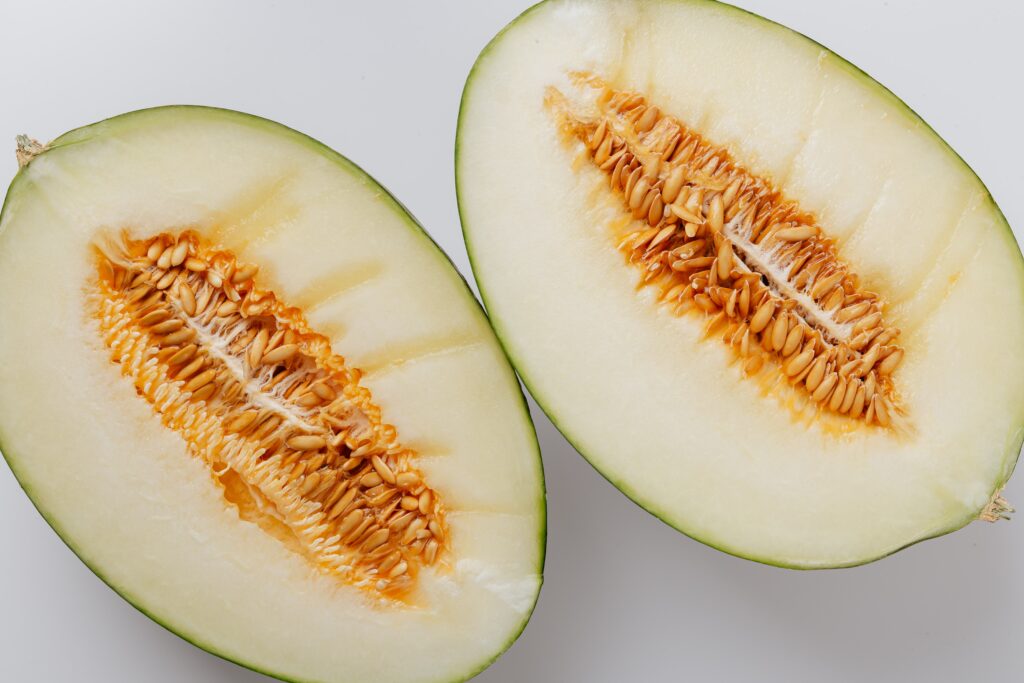
How to Freeze Cantaloupes
Freezing cantaloupe is easy and can be done in just a few simple steps. Here’s how to do it:
Step 1: Prepare the cantaloupe
Start by selecting ripe cantaloupe that is sweet and juicy. Wash the fruit under running water, and then cut it into cantaloupe pieces or cantaloupe chunks, depending on how you plan to use it later. Remove seeds and rind.
Step 2: Place on a baking tray
Place the cantaloupe pieces or chunks in a single layer on a baking tray or cookie sheet lined with plastic wrap. This will prevent them from sticking to the tray and make it easier to remove them later.
Step 3: Freeze in the freezer
Place the baking tray in the freezer and freeze the cantaloupe pieces or chunks for a few hours or until they are frozen solid.
Step 4: Transfer to a freezer bag or container
Once the cantaloupe is frozen, remove it from the baking tray and transfer it to a freezer bag or airtight container. Label the container or freezer bags with the date and contents, so you can keep track of how long it has been in the freezer.
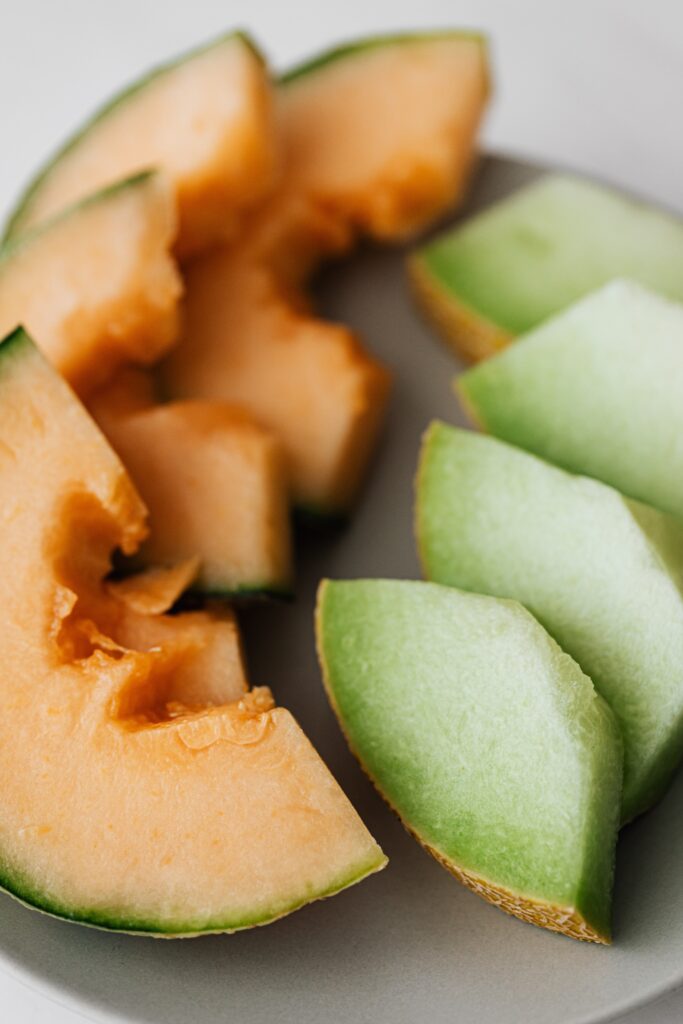
Can You Freeze Cantaloupe Cubes?
Yes, you can freeze cantaloupe cubes using the same method as described above. The only difference is that you will cut the cantaloupe into smaller cubes before freezing.
Can You Freeze Pureed Cantaloupe
Yes, you can freeze pureed cantaloupe. It freezes well and is great for later use in smoothies, sauces, or desserts. Store it in airtight containers or freezer bags for up to 6 months for the best quality.
How Long Can You Freeze Cantaloupe
Frozen cantaloupe can last up to 8 months in the freezer if stored properly in an airtight container or freezer bag, given that you’ve followed the method above!
Suggested: Can you freeze Oranges?
Can You Eat Frozen Cantaloupe?
Yes, you can eat frozen cantaloupe. It makes for a refreshing, icy treat and is excellent in smoothies, or you can enjoy it directly from the freezer as a cool snack on hot days. The texture will be different from fresh cantaloupe, but the flavor remains delightful.
Do Frozen Cantaloupes Taste Good
Yes, frozen cantaloupes can taste good, especially when used in smoothies, sorbets, or as a cold, refreshing snack. While the texture may change and become softer once thawed, the sweet and fruity flavor of cantaloupe is well-preserved when frozen properly.
Ways to Use Frozen Cantaloupe
Frozen cantaloupe can be used in a variety of ways, making it a versatile ingredient to have on hand. Here are a few ideas for using frozen cantaloupe:
Smoothies
Frozen cantaloupe adds a sweet and refreshing flavor to smoothies. Blend it with your favorite fruits and vegetables, such as strawberries, bananas, and spinach, for a healthy and delicious drink. Try this recipe!
Fruit Salad
Defrosted cantaloupe chunks can be added to a fruit salad for a sweet and juicy addition. You can mix it with other fruits such as grapes, kiwi, and blueberries for a colorful and tasty salad.
Sorbet
Frozen cantaloupe can be blended with some ice and honey to make a delicious sorbet. You can also add some mint leaves for extra flavor.
Baked Goods
Cantaloupe cubes can be used in baked goods such as muffins, bread, and cakes. Simply defrost the cantaloupe and chop it into small pieces before adding it to the batter.
Smoothie Bowls
Frozen cantaloupe cubes can be used as a base for smoothie bowls. Blend the cantaloupe with some yogurt and other frozen fruits such as strawberries, blueberries, and bananas for a healthy and filling breakfast.
Ice Cubes
Frozen cantaloupe can be blended into a puree and poured into ice cube trays. Add the cantaloupe ice cubes to water, lemonade, or your favorite cocktail for a refreshing and fruity twist.
Remember to always thaw frozen cantaloupe before using it in recipes. Enjoy the delicious taste of ripe cantaloupe, even in the off-season by using frozen cantaloupe.
Can you Freeze Kiwi? Find out here!
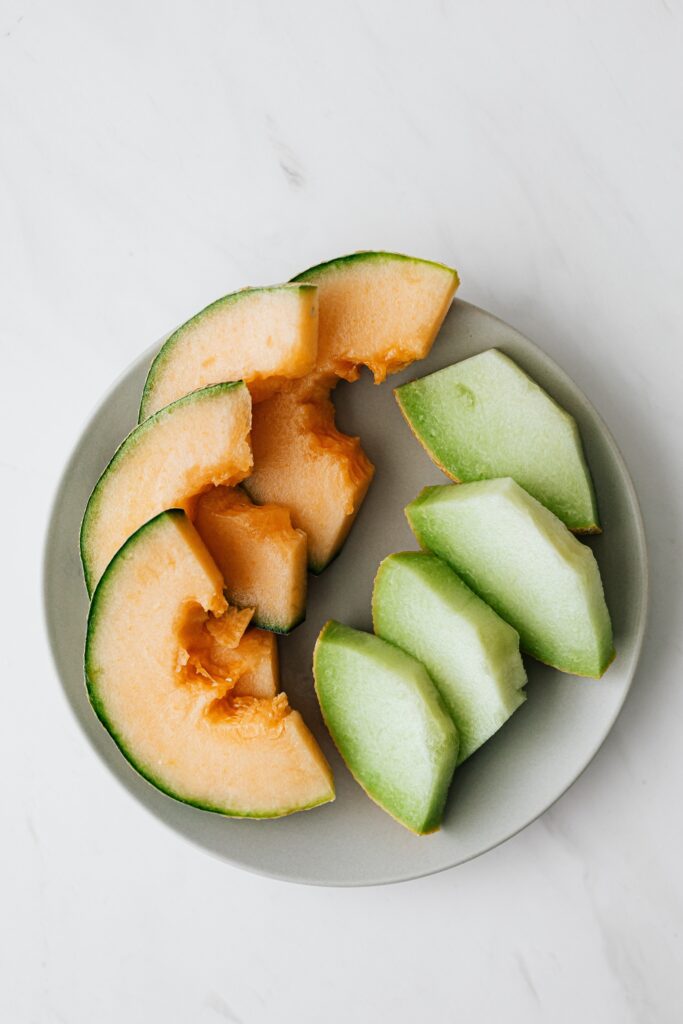
Top Tips for Freezing Cantaloupe
- Use ripe cantaloupe for the best flavor and texture.
- Cut the cantaloupe into small pieces or chunks for easy freezing and storage.
- Freeze cantaloupe on a baking tray before transferring it to a freezer bag or container.
- Label the freezer bag or container with the date and contents.
- Frozen cantaloupe can be added to smoothies or used in fruit salad.
- To prevent freezer burn, make sure the container or freezer bag is airtight.
Suggested: How to Safely Freeze Orange Juice
How to Defrost Cantaloupe
Defrosting cantaloupe is simple and easy. Here are a few ways to defrost frozen cantaloupe:
- Refrigerator Method: The best way to defrost cantaloupe is to thaw it slowly in the refrigerator. Simply remove the frozen cantaloupe from the freezer and place it in a container or a plastic bag. Then, put it in the fridge and let it defrost for several hours or overnight.
- Room Temperature Method: You can also defrost cantaloupe at room temperature. To do this, remove the frozen cantaloupe from the freezer and place it on a plate or a bowl. Then, leave it on the kitchen counter for a few hours or until it has thawed completely.
- Running Water Method: If you need to defrost cantaloupe quickly, you can use the running water method. To do this, place the frozen cantaloupe in a plastic bag and seal it tightly. Then, hold the bag under running cold water for a few minutes or until the cantaloupe has thawed.
After defrosting cantaloupe, it is best to consume it immediately. Thawed cantaloupe may not have the same texture and flavor as fresh cantaloupe, so it is best to use it in smoothies or fruit salads rather than eating it on its own.
Final Thoughts
Cantaloupe is a delightful fruit that can easily be frozen and savored at a later time. By adhering to the straightforward steps outlined, you have the power to freeze cantaloupe right in the comfort of your own home, ensuring you can relish this sweet treat whenever the craving strikes. Just be sure to place the frozen cantaloupe in an airtight container or freezer bag to maximize its shelf life and protect its quality. If you have any questions about the process or need further tips, feel free to drop them in the comments, and I’ll make sure to answer any queries you may have.

Christopher is a food and lifestyle expert, recipe developer and the content creator behind May Eighty Five. With years of experience in the kitchen, he also shares tips, tricks and how to’s that he has learnt over the years. Every week, he shares quick, simple and mostly healthy recipes along with some home and entertaining tips. You will find flavorful cocktails, delicious appetizers, tasty mains and some indulgent desserts. As a home decor enthusiast, he also likes to share simple DIY projects and simple tips for a beautiful home.






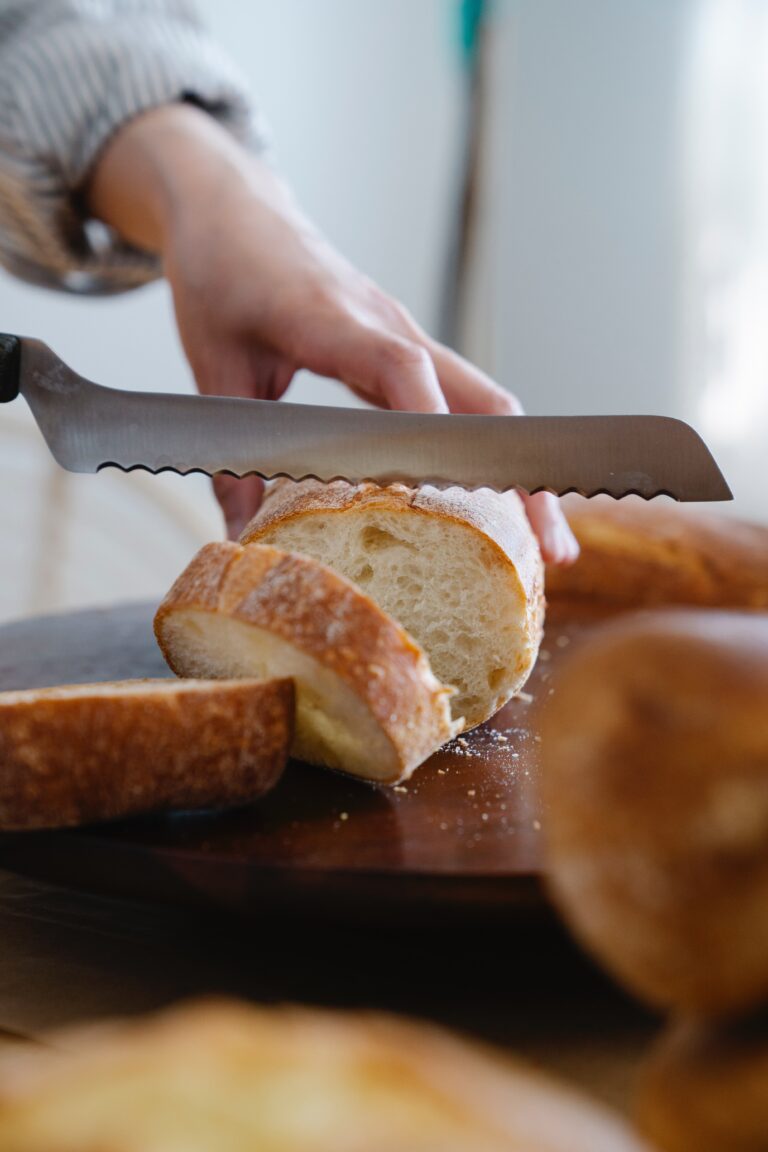

3 Comments